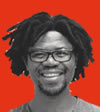The blunt Springboks need a cutting edge in 2019, writes SIMNIKIWE XABANISA.
Springbok coach Rassie Erasmus’ 50% win return from the 14 matches of his first year in charge seems to have been received with widely divergent opinions.
Owing to Allister Coetzee’s 54% record in 2017 before his acrimonious departure earlier in 2018, the temptation is there to read Erasmus’ results as a failure, what with the almost messianic expectations that came with his appointment.
But with a little context added, another way to look at the ‘glass half full or half empty’ argument could be that Erasmus has now laid the foundation to make his team competitive at the 2019 World Cup.
Conventional wisdom says that when building a team, the areas to focus on are defence, conditioning, set pieces, the breakdown and exits. Attack, the bit that excites the rest of us, is apparently the last thing to receive focus, given its time-consuming nature.
The lineouts may have had their spray-gun moments, and the defence at times rushed itself instead of the opposition, but both showed signs that (on their day) they worked. However, attack was the biggest concern, because whenever the Boks ran into a team that simply matched their forwards for physicality and defended resolutely, they ran out of ideas.
Through a combination of being wired to play the percentages and having midfielders inclined to tuck the ball under the jersey, the Boks struggled to break down teams that allowed them to keep possession. Which begs the question: how are the Boks going to address that with just four Test matches left before the World Cup?
The two obvious questions to ask are: what philosophy will they be playing to, given that Erasmus is as structured a coach as you may find, while attack coach Swys de Bruin is structured to be unstructured, and do they have the right personnel? Never has a De Bruin-coached team looked as uncertain what to do with the ball as the Boks have been at times in 2018, and in a side with wings such as Aphiwe Dyantyi, S’bu Nkosi and Cheslin Kolbe, it has to be asked whether they have the right combination of players besides them.
South Africa’s most experienced centres, Damian de Allende and Jesse Kriel – solid in physique and output – have come in for criticism for only being able to dispel rebellion on defence rather than wreak havoc on attack.
De Allende loves pinballing off defenders, while Kriel, who has the happy knack of scoring tries, likes the buck – make that the ball – to stop with him. Both seem to think passing is overrated, which means the only way the wings can get the ball is by chasing it, or with no space to work with.
A tweak to that status quo has been the introduction of Elton Jantjies for De Allende early in the second half, with fellow flyhalf Handré Pollard moving to inside centre.
It’s a move that has given the Boks some zip in attack and balance, brought by Jantjies’ ability to spot a pass and nail it and Pollard’s physicality, while their left- and right-foot kicking and general difference in approach give Erasmus’ men more options than simply playing one or the other.
But having already telegraphed that Pollard is his No 1 flyhalf, there is the impression that Erasmus doesn’t want to mess with the pivot’s head by moving him from his favoured position. Another option is to try totally different centres, such as France-based Jan Serfontein or Lukhanyo Am. They are ball players whose default setting is making space for those outside of them. Besides the fact that Serfontein has no inclination to set a target by taking the ball up De Allende-style, his not having played under Erasmus, nor in combination with the injured Am, might be cautionary factors in the coach’s thinking.
These schools of thought have a lot of aligning to do in 2019, because the number of games lost by the Boks when they should have won, owing to an attack struggling to find answers, is on the increase.
– This column first appeared in the January 2019 issue of SA Rugby magazine.





